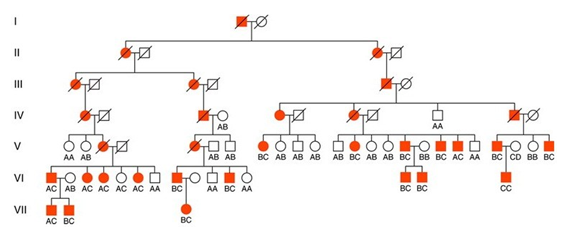The two strands of DNA are:
a. Parallel and complementary
b. Anti-parallel and complementary
c. Parallel and identical
d. Anti-parallel and identical
Answer: b. Anti-parallel and complementary
You might also like to view...
Before a eukaryotic cell divides, ____ assemble, separate the cell's duplicated DNA molecules, and then disassemble
a. cilia b. flagella c. microtubules d. microfilaments e. intermediate filaments
Examine this pedigree that shows segregation of Huntington disease and the DNA marker G8. What was the most likely genotype of individual V-3 at the DNA marker?

A) BC
B) AB
C) CC
D) AC
E) All of the possible genotypes are equally likely.
A nucleated, green cell that moves by means of flagella is a(n)
A) Alga. B) Bacterium. C) Fungus. D) Helminth. E) Virus.
The loss of purine bases from a strand of DNA is typically caused by which of the following?
A. replication error B. ultraviolet radiation C. a spontaneous chemical reaction D. deamination E. double-strand DNA break